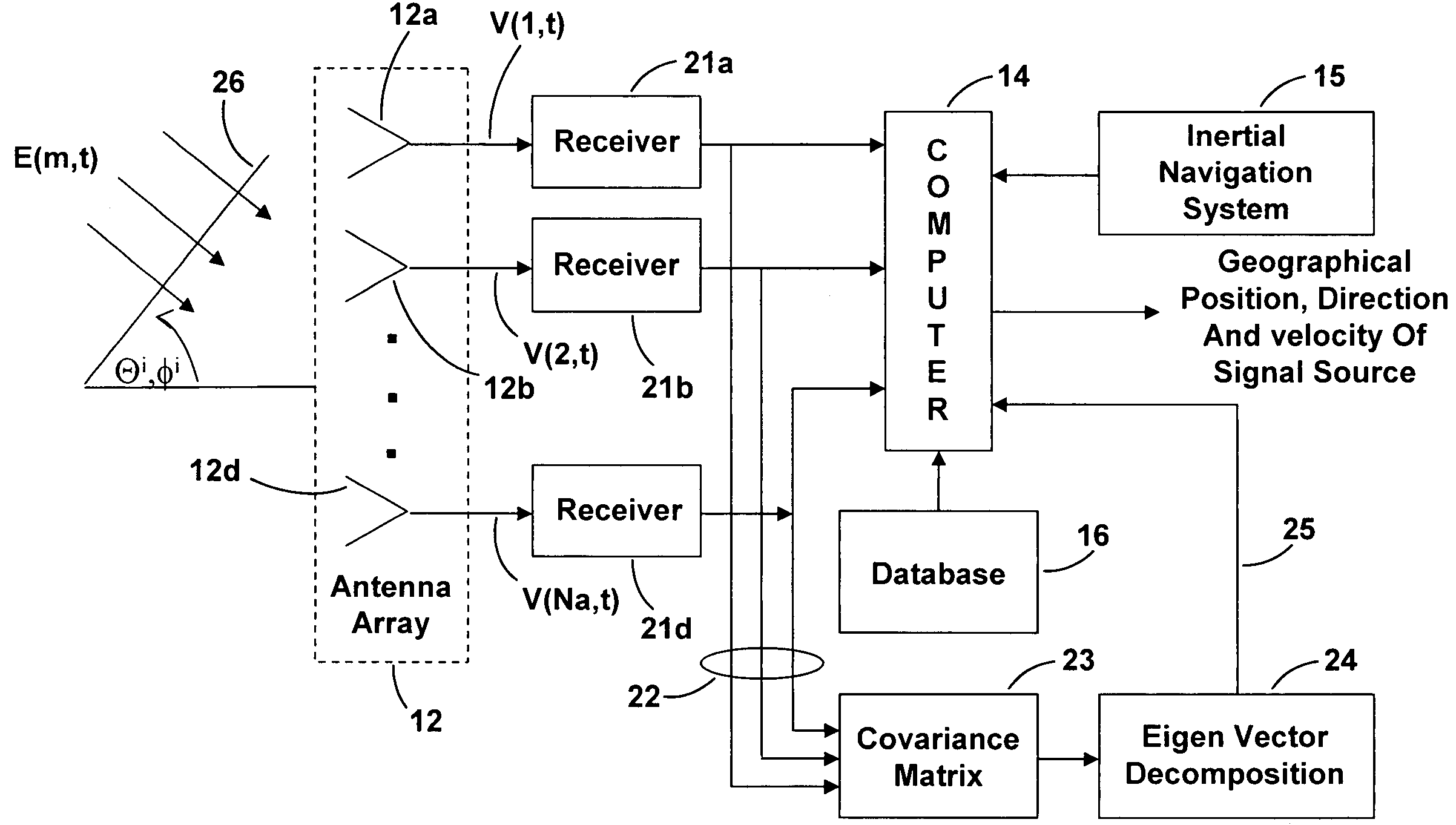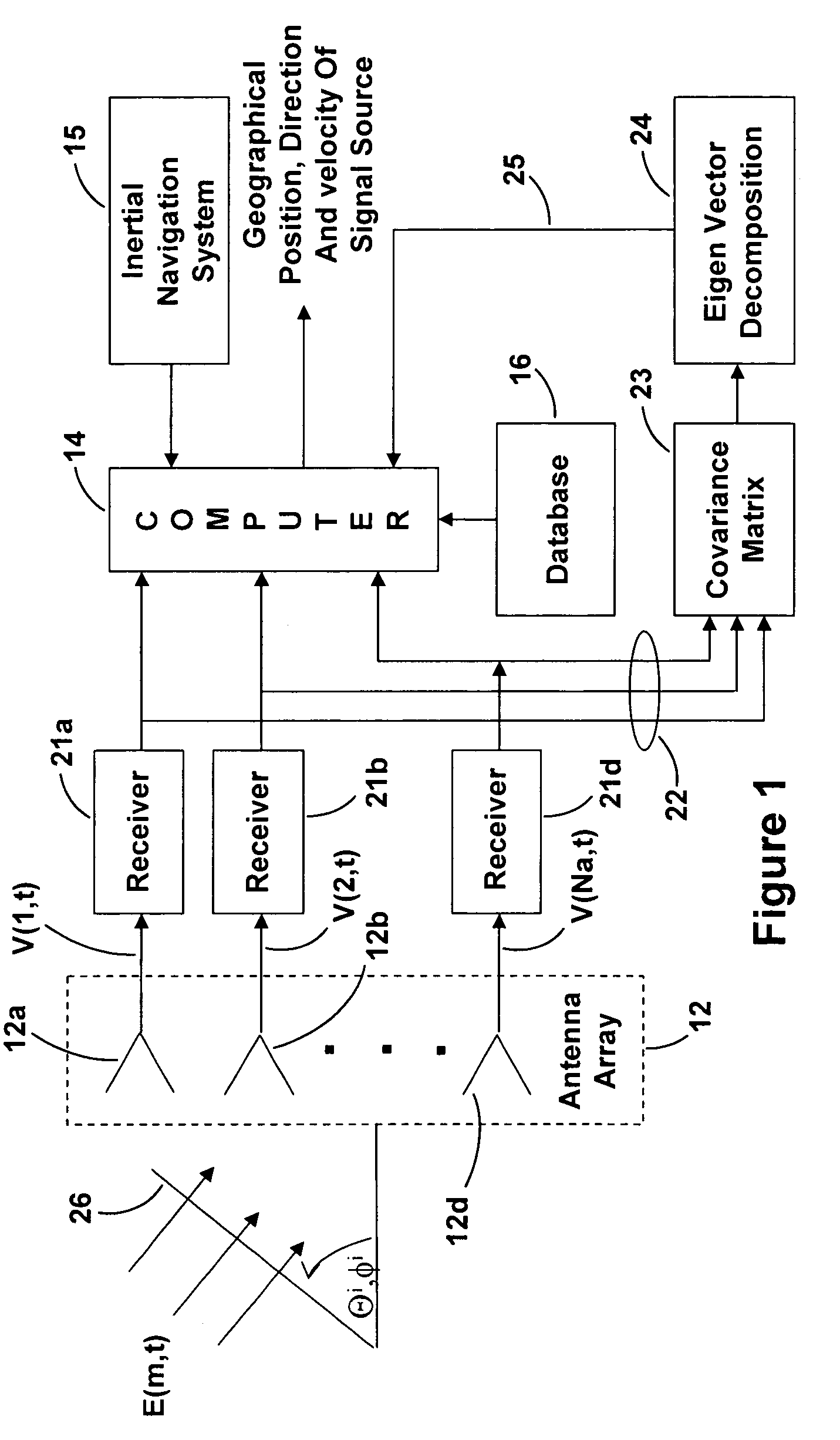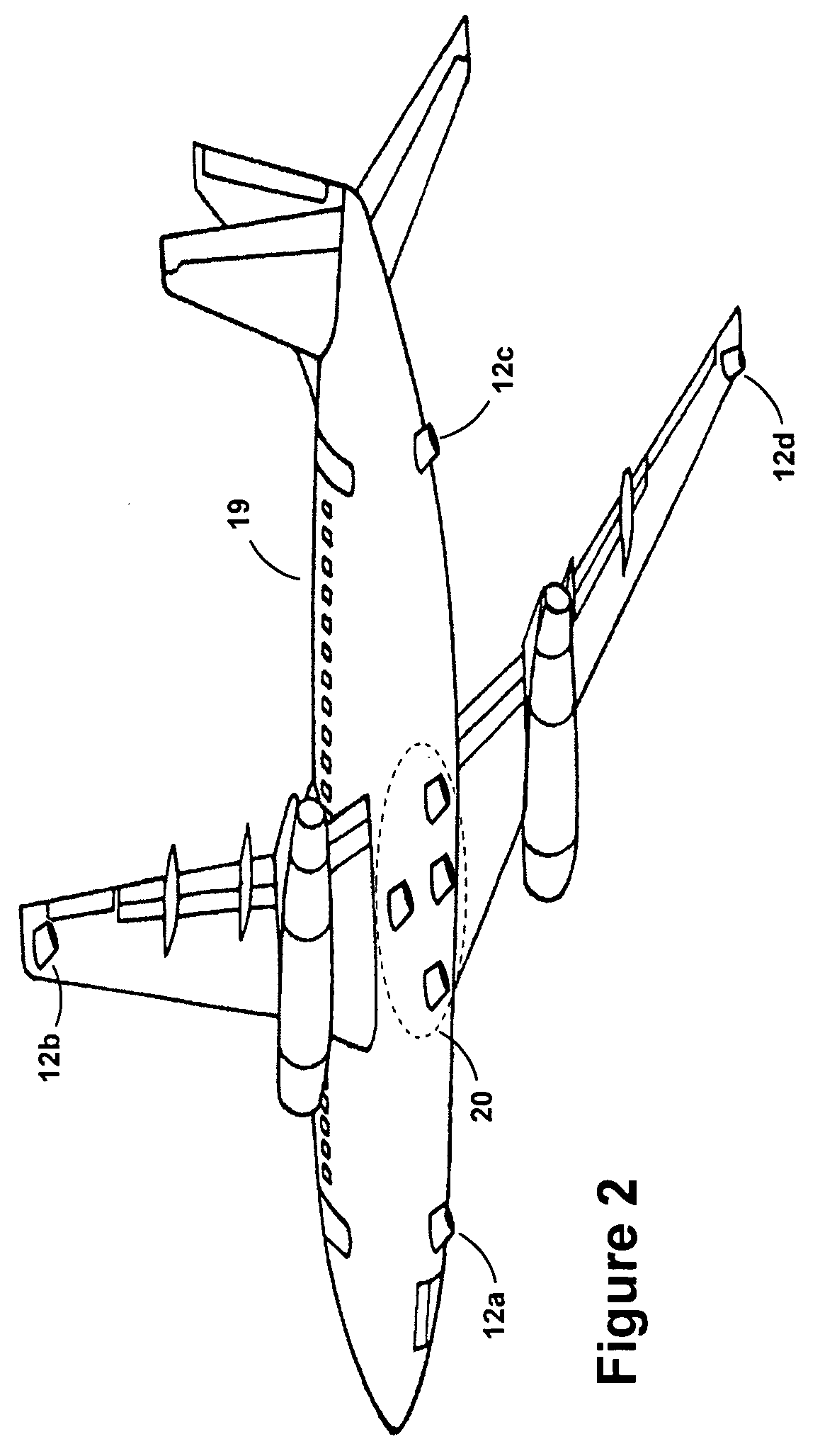Moving transmitter correlation interferometer geolocation
a transmitter correlation and interferometer technology, applied in direction finders, multi-channel direction-finding systems using radio waves, instruments, etc., can solve problems such as affecting correct ambiguity resolution, affecting the accuracy of the resolution of ambiguity, and difficult to achieve long baselines
- Summary
- Abstract
- Description
- Claims
- Application Information
AI Technical Summary
Benefits of technology
Problems solved by technology
Method used
Image
Examples
Embodiment Construction
[0041]In the following detailed description and the drawings there are numerous terms used that are defined below:[0042]A(θ,φ)=the calibration array manifold and there is a different manifold for use with received signals at different frequencies.[0043]Vc(θi, φj) and Hc(θi, φj) vertical and horizontal array calibration measurements[0044]ρk=polarization vector.[0045]AOA=angle of arrival.[0046]CIDF=Correlation Interferometer Direction Finding.[0047]MT-CIGL=Moving Transmitter Correlation Interferometer Geo-Location.[0048]DF=direction finding.[0049]E=electromagnetic radio waves incident on the array of antennas.[0050]Me=the number of data sets made from the received signal, 180 herein[0051]Na=number of antennas in the beam forming / direction finding array, 4 herein.[0052](O)*=complex conjugate of (O).[0053](ip, qd)=in-phase and quadrature-phase of a complex quantity.[0054]PI-CIGL=polarization independent correlation interferometer geo-location.[0055]|R(xi,yj)|2=global correlation surface...
PUM
 Login to View More
Login to View More Abstract
Description
Claims
Application Information
 Login to View More
Login to View More - R&D
- Intellectual Property
- Life Sciences
- Materials
- Tech Scout
- Unparalleled Data Quality
- Higher Quality Content
- 60% Fewer Hallucinations
Browse by: Latest US Patents, China's latest patents, Technical Efficacy Thesaurus, Application Domain, Technology Topic, Popular Technical Reports.
© 2025 PatSnap. All rights reserved.Legal|Privacy policy|Modern Slavery Act Transparency Statement|Sitemap|About US| Contact US: help@patsnap.com



